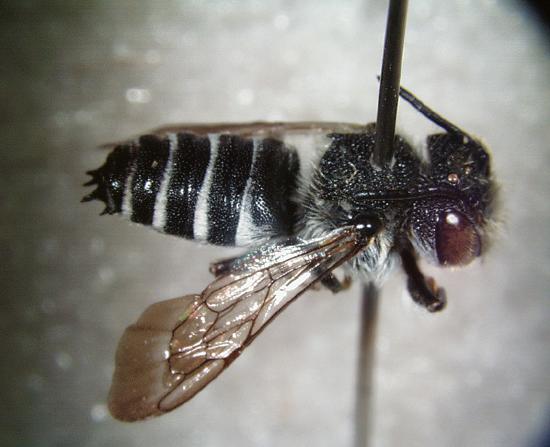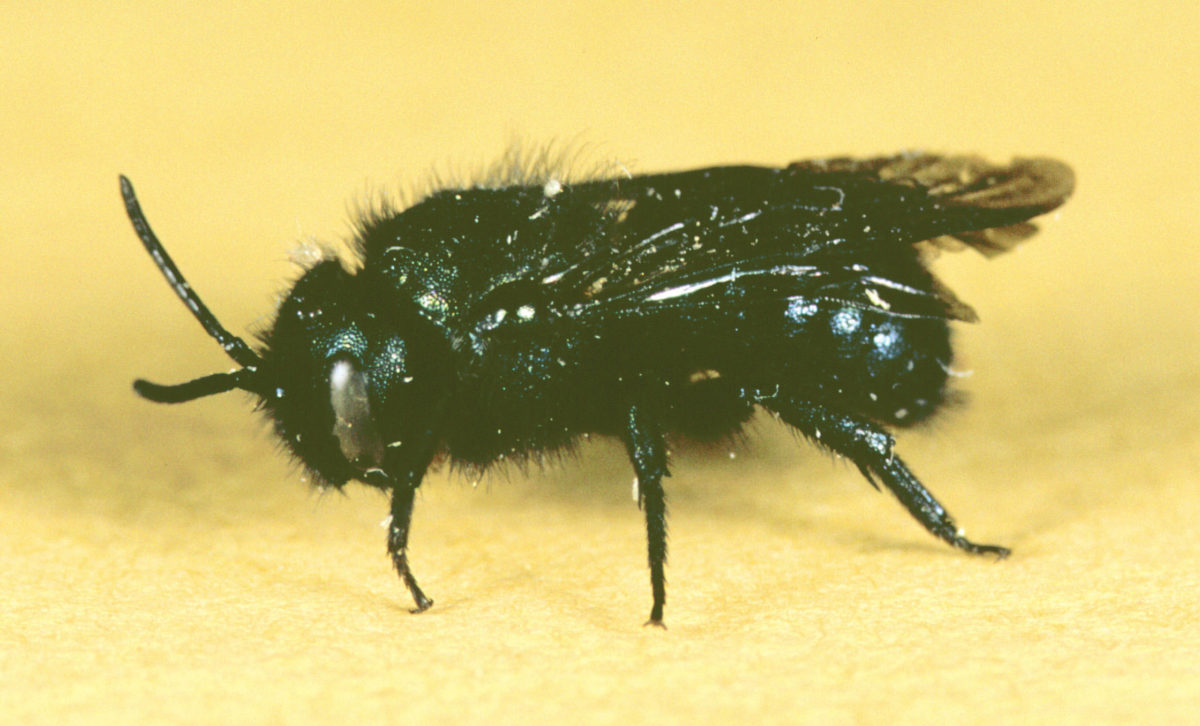
Cuckoo bees, like sapygid wasps and hairy-fingered mites, are cleptoparasites. Female cuckoo bees lay a single egg in the uncapped cell of the host bee while the rightful owner is away foraging. Upon hatching, the parasite larva kills the host and consumes its food provision. There is a single generation per year and the development timeline closely matches that of the host bee.
In most instances cuckoo bees closely resemble their host species, typically only lacking the pollen-collecting scopal hairs on the underside of the abdomen. Cuckoo bees often belong to the same family as their host, in this case, the family Megachilidae.
Four species in the genus Coelioxys are sometimes associated with alfalfa leafcutter bees: funeraria, gilensis, sodalis, and moesta. All of these species tend to be less common in prairie regions. Each species resembles other leafcutter bees, except females tend to have a longer, more sharply pointed abdomen, and males have a broader abdomen. Females and males of each species have short distinct spines protruding from the last segment (Figure A.10).

Female Coelioxys can sometimes be recognized near nest blocks by their rapid flight movements as they attempt to enter nesting holes during active leafcutter foraging. Eggs are laid either in exposed pollen provisions, or by ovipositing through the leaf lining into the pollen mass. Five instars occur, with the third instar usually killing the host or other cuckoo bee larvae. The development cycle is similar to leafcutter bees (see Figure 7.10), although these cuckoo species tend to emerge before the alfalfa leafcutter bees during incubation. For this reason, light traps during incubation can be an effective control measure to reduce Coelioxys populations.
Stelis montana (Figure A.11), another cleptoparasite, is commonly associated with the blue orchard bee. As with other cuckoo bees this species closely resembles its host in color and appearance. Distinguishing characteristics include a slightly smaller body, a lack of white facial hairs, and the absence of a pollen-collecting scopa. The lifecycle of S. montana mirrors that of other cuckoo bees with the female laying an egg in the host bee’s nest while it is away. Stelis eggs are about two-thirds the size of Osmia eggs. Stelis larvae kill and consume the host larva along with the pollen-nectar provision. Unlike the blue orchard bee, Stelis montana overwinters in the pre-pupal stage inside a silk cocoon. Development continues the following spring with emergence occurring near the end of the blue orchard bee nesting period. Because of its later emergence and nesting period, the majority of parasitized cells are outermost male cells of the blue orchard bee. Stelis cocoons can be identified when compared to blue orchard bee cocoons by their prominent nipple on one end, and the presence of long curly fecal pellets. For this reason, they can be hand sorted when cocoons are managed as loose cells, or identified and removed in translucent paper nest straws that are viewed against a strong light.
Various other lesser-known cuckoo bees exist. The genus Dioxys includes many cleptoparasites of various leafcutter and mason bee species, and the genus Nomada includes cleptoparasites of the ground-nesting alkali bee (Nomia melanderi).
